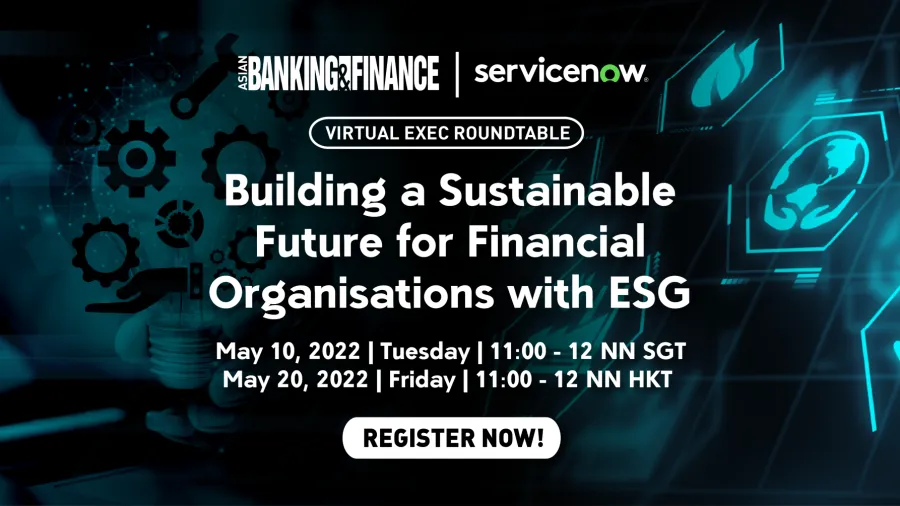
Financing a better future: How FSIs can develop an ESG strategy
An expert from ServiceNow said data is key for ESG integration.
Scientists have declared that the world is far-off from its carbon emission goals, pushing everyone to move faster toward a greener path, including financial services institutions (FSIs).
“We're seeing FSIs transition their portfolios and make commitments by 2030 and beyond to Environmental, Social and Governance (ESG) initiatives as part of their strategic agenda from the top,” ServiceNow’s Senior Director of Innovation Office for Asia-Pacific and Japan, Elisha Harrington, told Asian Banking & Finance.
Harrington said many banks are assigning a quality score to ESG related exposures, and issuance of green loans among other efforts being done by the financial sector.
Those who have yet to fully hop on the green train should start rethinking, according to Harrington, adding there’s a “need” for FSIs to mobilise an ESG strategy.
More than being a “compliance” to regulations, an ESG strategy would also allow FSIs to put themselves at a “competitive” edge given that consumers are taking advantage of sustainable backed lending portfolios, according to Harrington.
This can be done by proactively addressing transition risks, which are business risks that follow societal and economic movements toward a more climate-friendly future. “Transition risks stem from assets, and organisations that may inevitably lose market share as a result of climate change impacts, customer preferences, investors, and shareholder preferences as these changes are starting to occur,” added Harrington.
Real-time data is key
A way of addressing transition risks, as well as other risks related to ESG, is a proper assessment that can be successfully carried out by the collection of real-time data.
According to Harrington, analysis from FSIs should be “forward-looking”; however, data being collected by these situations currently are only “partially able to” or “not even fully adequately” meet quality standards such as length of history, completeness, and granularity.
These qualities are needed to “actually support the analysis and the decision making that goes along with the analysis,” added the ServiceNow expert.
Citing banks as an example, Harrington said data can help ascertain whether a company can start to sustain their operation when issuing ESG or sustainability linked loans.
One way to improve data collection, especially on an FSI’s customer base, is by using IoT (internet of things) enabled sensors.
“For example, an owner of a coal-fired plant could place IoT enabled monitors [and] place all of their environmental data on a blockchain, and the bank can actually interrogate that blockchain or IoT feeds or direct API's (application programming interface) so that the bank or the insurer can start to actually collect evidence,” Harrington shared, adding that a more accurate analysis would also lead to a reduction in greenwashing in the market.
Whilst waiting for more technologies that can provide FSIs with real-time data, Harrington said the sector is looking into other information types to provide better analysis of ESG risks such as geospatial data as demonstrated in spatial finance practice.
“The bank will be starting to look at new data analytics feeds, spatial feeds, or even satellite imagery to really assess what's actually going on from an environmental standpoint if they do need to assess that level of detail,” the financial expert explained.
To learn more about how FSIs can help build a more sustainable future from Harrington and Bain & Company’s Expert Senior Manager on sustainability, Gwyneth Fries, participate in the virtual roundtable event of ServiceNow and Asia Banking and Finance on 20 May.
Register for the 20 May event via https://asianbankingandfinance.net/event/building-sustainable-future-financial-organisations-esg-1



















 Advertise
Advertise










